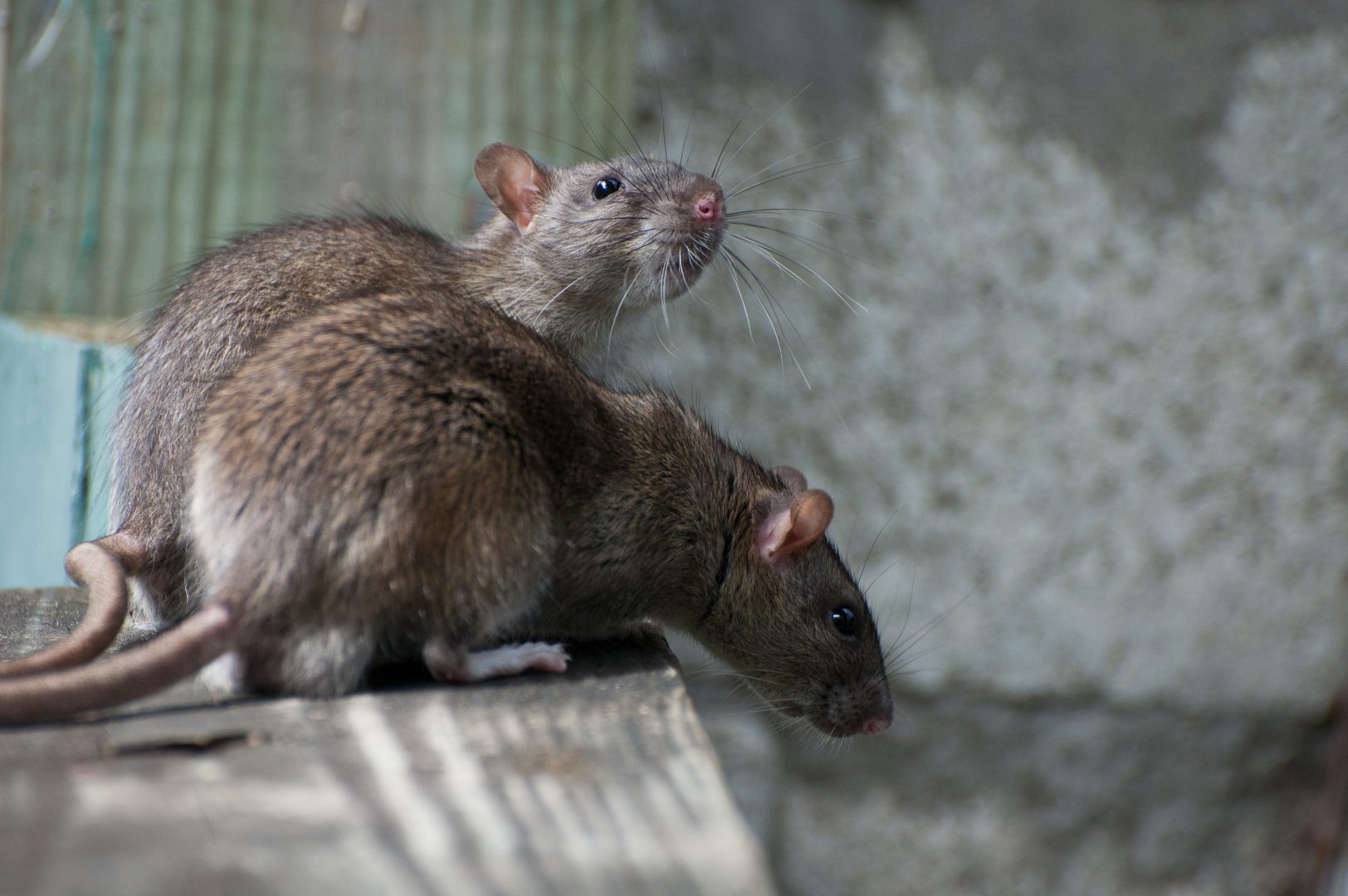Sanitary practices such as the use of tight lids on garbage cans, destruction of waste, and proper storage of food and construction materials limit food supply and nesting sites for rodents. Packaged foods, boxes, lumber and firewood should be stored a foot and a half off the floor and away from walls. Storage in this manner provides access for inspection and allows control measures such as poisons or traps to be placed under stacked materials and next to walls where rats and mice travel. It also removes rodent hiding and nesting places.
Spilled food provides an easy meal for rats and mice and should be swept up regularly. Well-swept floors make detection of signs of rodent activity possible.
Rodent Control in Dallas Fort Worth.
Rodent-proofing involves modifying structural details to keep rats and mice out of buildings. Thorough inspection is the first step and should be carried out semiannually.
A list of possible problem sites and suggested ways to eliminate them follows.
- All openings where water pipes, drain spouts and vents enter a building should be tightly sealed with sheet metal patches or filled with concrete.
- Doors, windows and screens should close tightly to ensure that rodents cannot enter through them.
- Installing 24- to 26-gauge galvanized sheet metal flashing around wooden door jambs and metal kickplates on the outside of doors will prevent rats from gnawing entrances under or around doors.
- Floor drains and fan openings should be tightly covered with 19-gauge, 6 mm (1/4 inch) mesh, galvanized, hardware cloth.
- Removing materials stacked against the outside of an otherwise rodent-proof building will stop rats and mice from gaining entry into upper stories. In situations where it is not possible to stack materials elsewhere, rodent-proofing should be extended to a height of 91 cm (36 inches) above the highest probable level of piled materials.
- Nonconcrete basement floors and shallow foundations should be protected from burrowing rats with a cement curtain wall around the outer edge extending vertically 91 cm (36 inches) into the ground or in an “L” shape 61 cm (24 inches) into the ground with a 30 cm (12 inch) lip extending outward.
- Any other possible entrances (openings larger than 6 mm or 0.25 inches) should be blocked off so that rodents cannot get in.
Rodent-killing as a single control measure is expensive and effective for only brief periods of time. It is most effective if carried out during the winter when reproduction is at its lowest level. Also, as mentioned earlier, it is best to sanitize and rodent-proof prior to killing rodents when possible. If rodent infestations are severe, it may be better to kill the rodents first, because removal of harborage may cause them to migrate to nearby buildings.
Trapping is a Common Method of Rat Killing
 Traps may or may not be baited but should always be placed in areas of rodent activity. Bacon, peanut butter, bread, and nutmeats make suitable baits. Mouse traps should be placed at intervals of about 1 meter (3 to 4 feet); rat traps should be set 4.5 to 9 m (15 to 30 feet) apart. To be most effective, they should be placed with the bait toward and the spring away from the wall. Traps are an alternative to rodenticides, especially where chemicals cannot be used; however, the use of traps is more labor intensive than chemicals.
Traps may or may not be baited but should always be placed in areas of rodent activity. Bacon, peanut butter, bread, and nutmeats make suitable baits. Mouse traps should be placed at intervals of about 1 meter (3 to 4 feet); rat traps should be set 4.5 to 9 m (15 to 30 feet) apart. To be most effective, they should be placed with the bait toward and the spring away from the wall. Traps are an alternative to rodenticides, especially where chemicals cannot be used; however, the use of traps is more labor intensive than chemicals.

